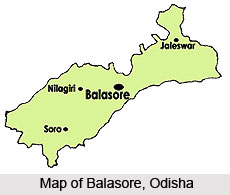 The ancient relics and the coins and other archaeological evidences, point to the fact that Balasore has been inhabited by various sects depending on caste, creed and religion, which helps the growth of multi-ethnic culture in Balasore. Presently Hindu, Muslim, Sikhs, Christians etc. and it signifies the essence of a mixed culture of Balasore.
The ancient relics and the coins and other archaeological evidences, point to the fact that Balasore has been inhabited by various sects depending on caste, creed and religion, which helps the growth of multi-ethnic culture in Balasore. Presently Hindu, Muslim, Sikhs, Christians etc. and it signifies the essence of a mixed culture of Balasore.
Bounty of religious places, with the shrines of various Gods and Goddesses specifies that the natives of Balasore are keenly religious. A variety of people since from the ancient times concentrate in Balasore, temples of different gods are to be found in the heart of the district. The cultural significance of Balasore lies on the concentration of different religious groups in a single place.
Balasore represents a mixed kind of habit in the behavioral pattern of the natives here, which is the discernible feature regarding the cultural tradition of Balasore.



















